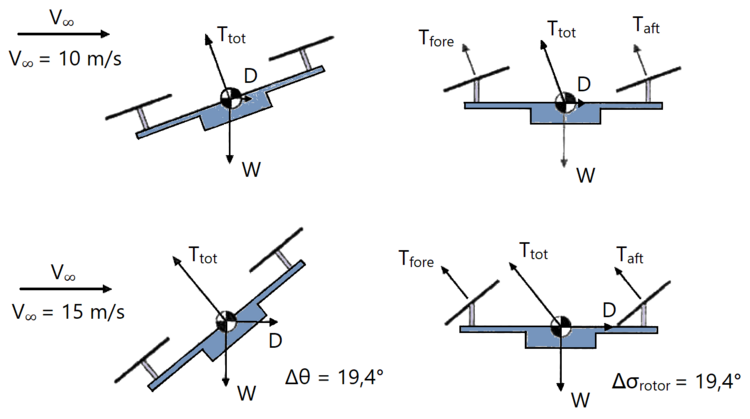Stabilized multicopter flight by decoupling of position and speed control – ANDroMeDa
Abstract
In this drone system, the rotors are pivoted and mounted independently of each other and also independently of the fuselage movement. In combination with a smart sensor and control system, automatic pilot control and thus an extremely stable flight condition of light flying objects even in turbulent conditions becomes a reality.
Advantages
- Balance of forces restored twice as fast after decoupling
- Effective compensation of gusts of winds
- Stable position of body
- Shorter execution times for control commands
- Pilot control possible through fully integrated flow measurement technology and autopilot
- Compensation of yaw moment with differential pivoting of the propeller
Fields of application
The system presented here has been designed for the task of carrying out stationary wind measurements at altitude. A patent application has now been filed for the basic principle and is equally suitable for challenging measurement tasks and for the general optimization of multicopter control. It enables both a more stable flight at high speeds as well as particularly fast and effective reactions to control commands. In addition, it makes a pilot control possible and thus a permanent, extremely stable body positioning. Comparable to the head of a bird of prey, which seems to hover calmly in midair in stationary flight, independent from the rest of its body, the body of the multicopter system presented here hovers calmly in midair while the independently pivotable drives provide high-performance control technology and compensate for currents, even before they can create a disruption to the body.
Background
An extremely lightweight design is desirable in aviation as every gram less enables a longer flight time. At the same time however, a light weight, in particular for smaller objects such as drones, means high susceptibility to uncontrolled movements in turbulent currents, especially strong gusts of winds.
Problem
In order to precisely carry out flight movements and stationary tasks, a high level of control is required. Pendulum movements caused involuntarily need to be neutralized by compensating movements as quickly as possible. Until now however, the movements of drones could, in fact, only be compensated for and not anticipated and prevented using pilot controls. Moreover, in order to balance as well to change speed, the entire object needs to be moved as it is firmly connected to the rotors.
Solution
The system presented here adds a degree of freedom by making the drives or drive-producing elements (rotors) pivotable and mounting them independently from each other as well as independently from the body movement. The possibility of influencing position and speed of the drone by tipping the individual drives makes a movement of the body obsolete, even to change the flight attitude. Thus, a linear horizontal movement of the body is possible during any flight maneuver. Likewise, a tilting of the body can be realized without this resulting in a change of speed. The reduced inertia of the system also enables a much faster implementation of a control command. A number of on-board sensors (for position, approach angle, speed, wind speed etc.) paired with GPS coordinates enable a comprehensive analysis of the current flight attitude and the integrated software takes over the automatic controls which guarantees a stable flight attitude.

